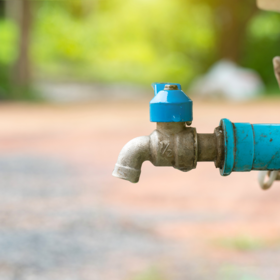
Water Potability Classification Hackathon by IndabaX Nigeria 2021
Helping Nigeria
NGN 320 000
Challenge completed ~4 years ago
Classification
155 joined
112 active
Start
Sep 16, 21
Close
Sep 23, 21
Reveal
Sep 23, 21
About
This dataset is split into train and test files. The train contains 2260 rows and the test 1016.
The objective of this task is to create a binary classification machine learning model to predict if water is potable or not.
Files available for download:
- Train.csv - contains the target. This is the dataset that you will use to train your model.
- Test.csv- resembles Train.csv but without the target-related columns. This is the dataset on which you will apply your model to.
- SampleSubmission.csv - shows the submission format for this competition, with the 'ID’ column mirroring that of Test.csv and the ‘target’ column containing your predictions. The order of the rows does not matter, but the names of the ID must be correct.
Variable Descriptions
- pH value: PH is an important parameter in evaluating the acid–base balance of water. It is also the indicator of acidic or alkaline condition of water status. WHO has recommended a maximum permissible limit of pH from 6.5 to 8.5. The current investigation ranges were 6.52–6.83 which are in the range of WHO standards.
- Hardness: Hardness is mainly caused by calcium and magnesium salts. These salts are dissolved from geologic deposits through which water travels. The length of time water is in contact with hardness producing material helps determine how much hardness there is in raw water. Hardness was originally defined as the capacity of water to precipitate soap caused by Calcium and Magnesium.
- Solids (Total dissolved solids - TDS): Water has the ability to dissolve a wide range of inorganic and some organic minerals or salts such as potassium, calcium, sodium, bicarbonates, chlorides, magnesium, sulfates etc. These minerals produced an unwanted taste and diluted color in the appearance of water. This is the important parameter for the use of water. The water with high TDS value indicates that water is highly mineralized. The desired limit for TDS is 500 mg/l and maximum limit is 1000 mg/l which is prescribed for drinking purposes.
- Chloramines: Chlorine and chloramine are the major disinfectants used in public water systems. Chloramines are most commonly formed when ammonia is added to chlorine to treat drinking water. Chlorine levels up to 4 milligrams per liter (mg/L or 4 parts per million (ppm)) are considered safe in drinking water.
- Sulfate: Sulfates are naturally occurring substances that are found in minerals, soil, and rocks. They are present in ambient air, groundwater, plants, and food. The principal commercial use of sulfate is in the chemical industry. Sulfate concentration in seawater is about 2,700 milligrams per liter (mg/L). It ranges from 3 to 30 mg/L in most freshwater supplies, although much higher concentrations (1000 mg/L) are found in some geographic locations.
- Conductivity: Pure water is not a good conductor of electric current rather it's a good insulator. Increase in ions concentration enhances the electrical conductivity of water. Generally, the amount of dissolved solids in water determines the electrical conductivity. Electrical conductivity (EC) actually measures the ionic process of a solution that enables it to transmit current. According to WHO standards, EC value should not exceed 400 μS/cm.
- Organic_carbon: Total Organic Carbon (TOC) in source waters comes from decaying natural organic matter (NOM) as well as synthetic sources. TOC is a measure of the total amount of carbon in organic compounds in pure water. According to the US EPA < 2 mg/L as TOC in treated / drinking water, and < 4 mg/Lit in source water which is used for treatment.
- Trihalomethanes: THMs are chemicals which may be found in water treated with chlorine. The concentration of THMs in drinking water varies according to the level of organic material in the water, the amount of chlorine required to treat the water, and the temperature of the water that is being treated. THM levels up to 80 ppm is considered safe in drinking water.
- Turbidity: The turbidity of water depends on the quantity of solid matter present in the suspended state. It is a measure of light emitting properties of water and the test is used to indicate the quality of waste discharge with respect to colloidal matter. The mean turbidity value obtained for Wondo Genet Campus (0.98 NTU) is lower than the WHO recommended value of 5.00 NTU.
- Potability: Indicates if water is safe for human consumption where 1 means Potable and 0 means Not potable.
Join the largest network for
data scientists and AI builders
Status
© Zindi 2025